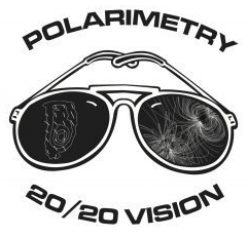The U.S. National Academy has organized Decadal Surveys of Astronomy and Astrophysics since the 1970ies to discuss and set priorities in the field for the coming decade. One way that the community (sub-communities or individuals) can influence this process is by submitting White Papers on topics, or areas, they think are of particular importance. The more considered and substantial such white papers are, the bigger the impact.
Polarimetry constitutes the third leg of the astronomical research tripod. In addition to photometry and spectroscopy, unique information about celestial objects and processes is gleaned through analysis of polarized light. Polarization studies are crucial for understanding the dynamics of the universe and have: established the Unified Model of AGN; revealed the elusive magnetic field in the Milky Way and external galaxies; and mapped key features on unresolved stars. Polarimetry, across a wide range of wavebands, reveals key behaviors and insights, and cannot be replaced by imaging and/or spectroscopy alone.
Polarimetry is practiced across the full range of wavelengths, from radio through gamma rays. At some wavelengths, the U.S. leads the world in polarimetric capabilities and investigations, including ground-based radio with the VLA and VLBA. In UV/O/IR astronomy, the situation is worse, with only a single polarimeter broadly available to the community for ground based observations, on one medium-to-large telescope.
The 2010 Decadal Survey of Astronomy and Astrophysics “New Worlds, New Horizons in Astronomy and Astrophysics” acknowledged in the “Panel on the Galactic Neighborhood” the importance of polarimetry, including for the study of magnetic fields.
A number of ongoing and proposed surveys and missions – most of which are based, or led, from outside of the U.S. show the resurgence of polarimetry as a central tool to astronomical research.
If the U.S. astronomy community wants to fully participate in these developments, polarization and polarimeters must be emphasized in the 2020ies. This workshop, and it’s supporting process is intended to gather and hone the arguments for such an effort and focus.
We know that we had some impact with the 2010 White Papers since the report from the 2010 Decadal Survey of Astronomy and Astrophysics “New Worlds, New Horizons in Astronomy and Astrophysics” endorsed a focus on magnetic fields was stressed the importance of polarimetry.
In the report by the “Panel on the Galactic Neighborhood” they picked up on our recommendation to study the alignment mechanisms for dust grains and specifically noted that:
Using aligned dust as a tracer for magnetic fields requires understanding the shapes and optical properties of dust grains and how variations in the degree of dust alignment depend on local conditions in clouds.
